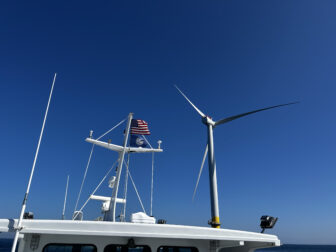I was taking the short drive in Baltimore from Locust Point to Fort McHenry after meeting with a CCAN activist at a local coffee shop. “It’s worth taking 5 minutes to breath in the history of this part of the city,” she said. “It’s where the Star Spangled Banner was written, it’s where American troops fought off the British to protect the city of Baltimore in the War of 1812.” Crossing the bridge onto Fort McHenry, it’s also where I saw first hand the size and scope of Baltimore’s next big fight: hundreds of DOT-111 (Department of Transportation) trains, or “soda cans on wheels” in the rail yard on Locust Point, potentially carrying explosive North Dakota crude oil or toxic Alberta tar sands.
Transport of Bakken crude oil has been poorly regulated and, subsequently has had an abysmal track record when it comes to safety and environmental destruction. Most crude oil is transported on outdated DOT-111 trains from the fracking fields of North Dakota or the tar sands in Alberta, Canada — crossing cities, rural towns, state parks, watersheds, aquifers, and mountains; all travelling thousands of miles to finally get to refineries. Sometimes, a wheel slips off the track, and that can cause a derailment, which usually punctures the tank. This inevitably causes an oil spill, and easily ignitable Bakken crude oil explodes. When that happens, the resulting explosions look like what nightmares are made of.

Tragically, it was only after a massive explosion in Canada, that killed 47 people and leveled a town, that federal regulators decided to take action to propose rules to make crude oil transport safer. Yet, even after massive amounts of environmental destruction, dangerous DOT-111 trains still carry crude oil throughout our country. “Most of the explosive crude oil on U.S. rails is moving in tanker cars that are almost guaranteed to fail in an accident,” says Earthjustice attorney Patti Goldman, who is currently litigating against the Department of Transportation after failing to ban DOT-111 trains from current use.
Now, oil companies are trying to use Baltimore and the Chesapeake Bay as a throughway to ship Bakken crude and Alberta tar sands to refineries along the East Coast. A Texas based company called Targa Resources is proposing to retrofit an industrial shipping terminal in Curtis Bay to ship over 9 million barrels of oil per year, which equates to over a million gallons of crude oil every day. That means hundreds of DOT-111 “bomb trains” traveling through Baltimore City neighborhoods every year.
Is it worth having these travel through Baltimore? No way. The risks drastically outweigh the meager, if any, benefits, especially with so many unknowns. Currently, there has been no study on safety impacts, environmental health impacts, economic impacts, or train traffic impacts that Targa’s proposed shipping terminal would have on city of Baltimore. Rail companies are even refusing to disclose the routes that crude oil would travel through the city, going so far as suing state regulators to keep this information secret.
But, there is a solution — we can put pressure on the Baltimore city council to halt local permits on Targa’s facility, effectively passing a moratorium on increased crude oil trains through Baltimore, until environmental, safety, economic, and traffic impacts are studied and this information becomes available to the public. The public has a right to know what is traveling through their neighborhoods.

We need to act fast to keep our city safe — and already, we’re gaining real momentum. Since launching our campaign in October, we’ve held two town hall meetings, packed a public hearing, collected hundreds of public comments to the Maryland Department of the Environment, met with City Councilmembers, and petitioned all throughout Baltimore neighborhoods to raise awareness of this dirty and dangerous plan. We’ve even been featured on the front page of the Baltimore Sun!
We don’t need to wait until a tragedy happens in the city of Baltimore for the city council to take action. They can and should take action right now to protect their constituents.
First, sign this petition to your City Councilmember and Mayor Rawlings-Blake here. Then, sign this public comment to the Maryland Department of the Environment. Finally, fill out this volunteer sign up page, and we’ll get in contact. Together, we will be ready to take on Baltimore’s next big fight. No Explosive Oil Trains!






